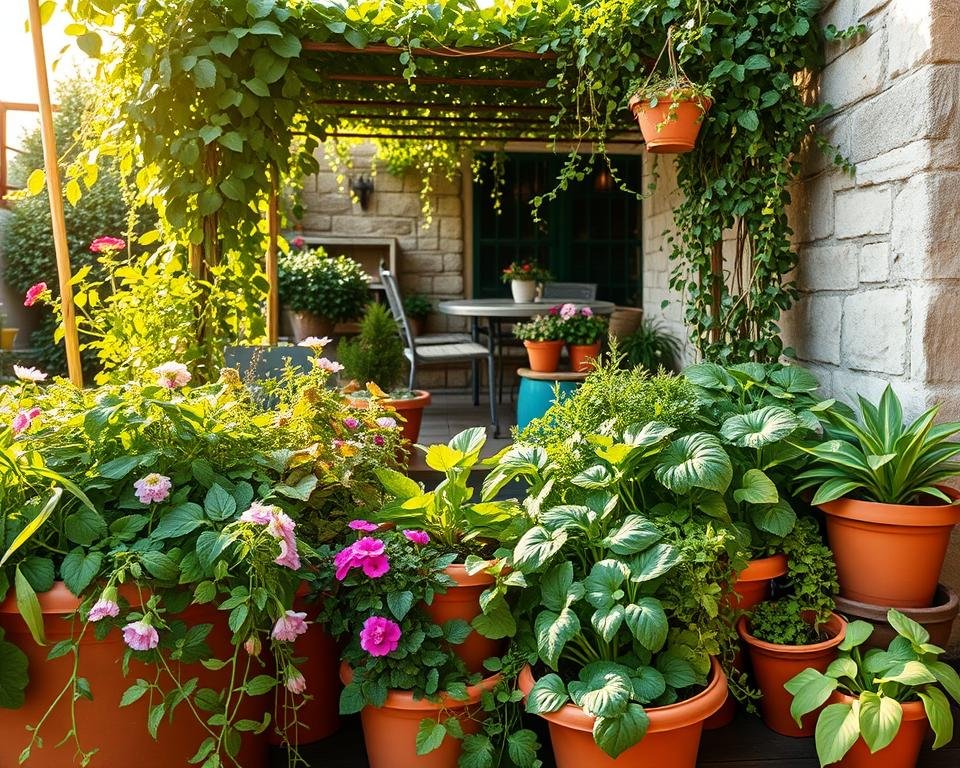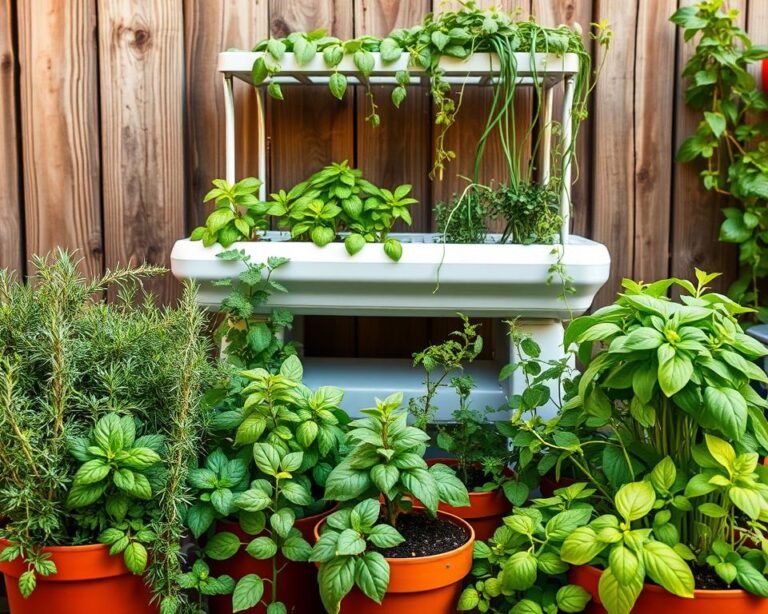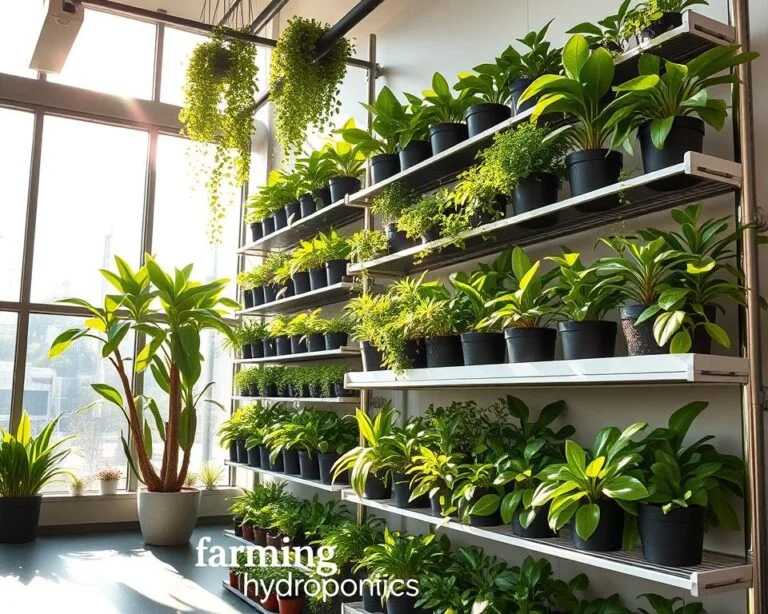Microclimate Gardening Tips for Container Success
Every gardener dreams of a thriving container garden. Plants flourish even in tough environments when you apply smart microclimate gardening tips. Microclimates are a secret weapon that help you create personalized environments with better temperature, humidity, and light for optimal plant growth.
Imagine making a small balcony or urban space a vibrant ecosystem. Your plants will not just survive they’ll thrive. By understanding microclimates, you can grow plants beyond the typical limits of your space.
Container gardening becomes an art when you design microclimates tailored to your plants’ needs. Whether you’re dealing with harsh urban heat or aiming to grow exotic species, applying microclimate gardening tips transforms your garden into a resilient, productive oasis.
Key Takeaways
- Microclimates can create temperature variations up to a full zone warmer
- Strategic placement can optimize sunlight and shade for different plant needs
- Container materials and placement significantly impact plant growth
- Humidity and wind protection are crucial for plant health
- Creative microclimate design expands gardening possibilities
Understanding Microclimates and Their Impact on Container Gardens
Creating microclimates is a smart gardening trick. It turns your container garden into a thriving spot. By tweaking the weather, you boost plant growth and make them stronger.
Microclimates are special spots with their own weather. They can be natural or made by us. This lets gardeners control their environment in amazing ways.
What Defines a Microclimate
A microclimate is shaped by a few things:
- Terrain and landscape features
- Surrounding structures and plants
- Soil type and color
- How close it is to water
Natural vs Artificial Microclimates
Natural microclimates just happen in nature. Artificial ones are made by gardeners. We can shape these spaces with smart techniques.
Studies show how great microclimates can be:
- Crops can grow 2-3 zones beyond usual places
- Shade stops plants from growing too fast in summer
- Features like thermal mass keep temperatures steady
Benefits for Container Growing
Container garden microclimates bring big benefits:
- Longer growing seasons
- Shield from harsh weather
- More types of crops
- Healthier plants and better yields
Learning about microclimates turns your container garden into a strong, fruitful place. It goes beyond what traditional gardening can do.
Essential Elements of Container Garden Microclimates
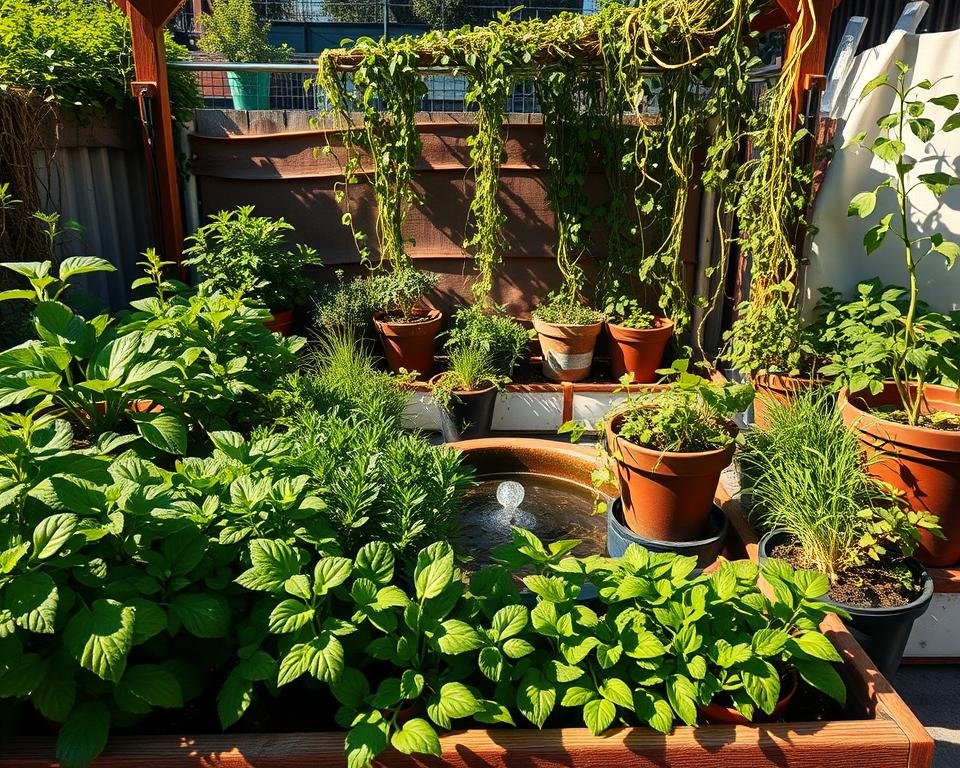
To create the perfect microclimate for your container garden, you need to understand and adjust four key elements: sunlight, water, wind, and thermal mass. These elements work together to manage the climate for your plants with precision.
Sunlight is crucial in creating a microclimate. Different plants need different amounts of light. For example, leafy greens do well in cooler spots with dappled shade. This helps prevent them from growing too quickly in the hot summer. Strategic placement can extend your growing zone by 2-3 hardiness zones, giving you more options for plants.
- Understand light requirements for specific plants
- Use shade cloth to moderate intense sunlight
- Map sun exposure throughout the day
Managing water is also vital in creating a controlled atmosphere. The right humidity and watering methods are essential for plant health. Urban gardeners can use simple tools like water bowls or humidifiers to create the best conditions. Some strategies include:
- Maintaining consistent soil moisture
- Using mulch to prevent evaporation
- Implementing targeted watering techniques
Thermal mass and wind protection are the final pieces of the microclimate puzzle. Dark-colored containers can keep heat in overnight, protecting plants from frost. Windbreaks help keep temperatures steady and prevent plant stress, leading to healthier growth in your container garden.
Microclimate Creation: Tools and Techniques
To make your container garden perfect, you need to optimize the indoor climate. Knowing about microclimatic zoning lets you turn small areas into lush plant spaces. Using climate simulation technologies can greatly boost plant health and growth.
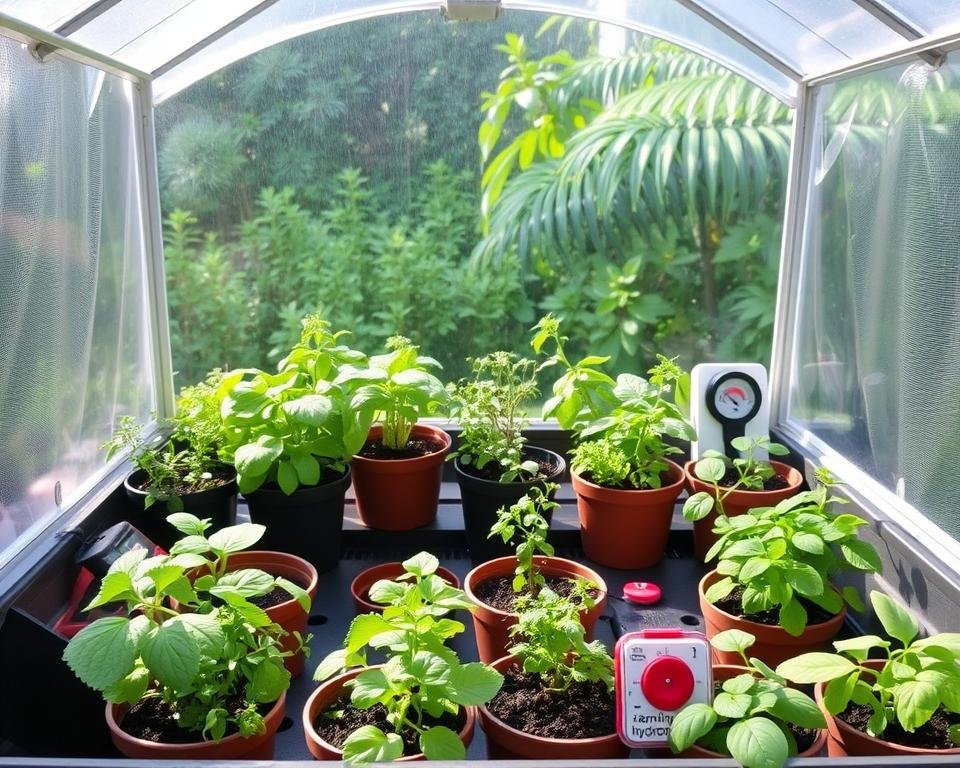
For those who love container gardening, there are many ways to create the right growing conditions. Shade cloth solutions are a great place to start for managing sunlight and temperature.
Shade Cloth Strategies
Shade cloths are amazing for controlling the environment in container gardens. They can:
- Lower temperatures by up to 10 degrees
- Make the air more humid
- Shield plants from too much sun
Water Features and Humidity Control
Adding water features can change your garden’s microclimate. Placing small fountains or water containers can make areas more humid. This helps plants that love moisture.
| Water Feature | Microclimate Impact |
|---|---|
| Small Fountain | Increases humidity by 15-20% |
| Ceramic Water Bowl | Moderates surrounding temperature |
| Misting System | Provides consistent moisture |
Wind Barriers and Thermal Mass
Keeping your container garden safe from wind is key to preventing plant stress and moisture loss. Thermal mass elements like dark-colored containers or stone surfaces help keep the temperature steady. This makes the growing environment more consistent.
By using these creative methods, you can turn your container garden into a thriving, controlled space. It will support a wide variety of plants.
Strategic Container Placement for Optimal Growing Conditions
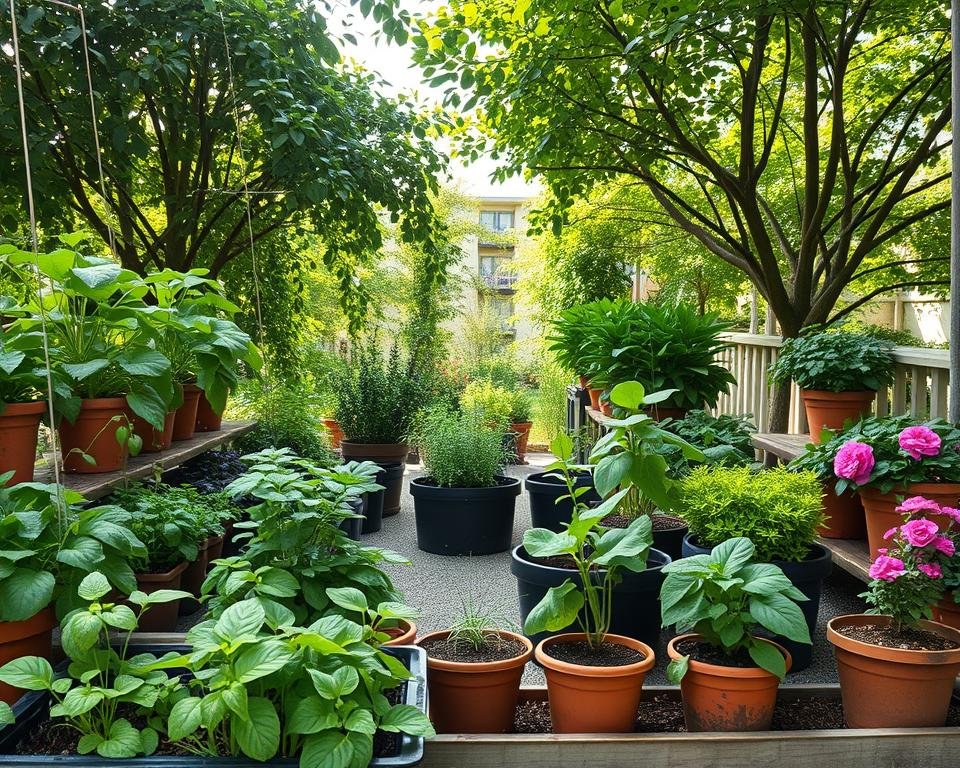
Creating the perfect microclimate for your container garden starts with strategic placement. Where you place your container can greatly affect plant growth and environment. Knowing how to position your containers can greatly improve your gardening.
Consider these key factors when selecting container locations:
- Sun exposure impacts plant temperature and growth potential
- Wind patterns affect humidity and plant stress levels
- Surrounding structures create unique microclimates
South-facing areas in the northern hemisphere are great for container gardening. These locations warm up faster in spring and receive more winter sunlight. This makes them perfect for plants that love heat. By using natural landscape features, you can make your container garden grow better.
Different plants need different conditions. For example, heat-sensitive herbs do well in shade, while tomatoes need full sun. Watching your environment closely helps you create the right spots for each plant.
Strategic placement can extend your growing zone by 2-3 regions, dramatically expanding your gardening possibilities.
Use nearby structures like walls or rocks to keep temperature and humidity stable. Dark containers hold heat, while light ones reflect sunlight. These are great tools for managing your microclimate.
- Brick walls provide excellent heat reflection
- Stone surfaces moderate temperature fluctuations
- Building edges can create wind-protected zones
By understanding and managing your container garden’s microclimate, you’ll create the best environment for plants. This ensures healthier, more productive gardens.
Soil and Container Considerations
Your container garden’s success depends on understanding soil and container interactions. Microclimate creation starts with strategic choices in materials and composition. These choices support localized weather modification.
Container Materials and Heat Retention
Choosing the right container is key to managing your garden’s microclimate. Different materials handle temperature changes differently:
- Dark colored pots like black grow bags can hold a lot of heat overnight
- Terra cotta provides natural temperature regulation
- Ceramic containers offer moderate insulation
Soil Composition for Microclimate Support
Soil type greatly affects moisture retention and temperature stability. Clay soils hold more moisture than sandy soils. This creates more consistent microclimatic conditions.
| Soil Type | Moisture Retention | Temperature Stability |
|---|---|---|
| Clay Soil | High | Consistent |
| Sandy Soil | Low | Variable |
| Loamy Soil | Moderate | Balanced |
Mulching Techniques
Mulching is a powerful technique for environmental control in container gardens. Organic mulches can:
- Reduce soil temperature fluctuations
- Protect plant roots from extreme temperatures
- Improve soil structure over time
By carefully selecting containers, understanding soil dynamics, and implementing mulching strategies, you can create robust microclimates. These support healthy plant growth.
Conclusion
Artificial climate systems have changed container gardening a lot. They let gardeners control the environment for plants. This makes your container garden a place where plants can thrive and grow well.
With precision climate management, you can make special areas for plants. These areas protect plants from bad weather and help them grow better. We’ve talked about how to use design and placement to make your garden better.
Starting your microclimate gardening journey is exciting. You get to try new things and make each container special. You can adjust the temperature and humidity to help your plants grow, even in tough weather.
Good container gardening is all about watching, learning, and changing. By creating safe and caring spaces for your plants, you open up a whole new world of gardening. You can do amazing things on your patio, balcony, or windowsill.

